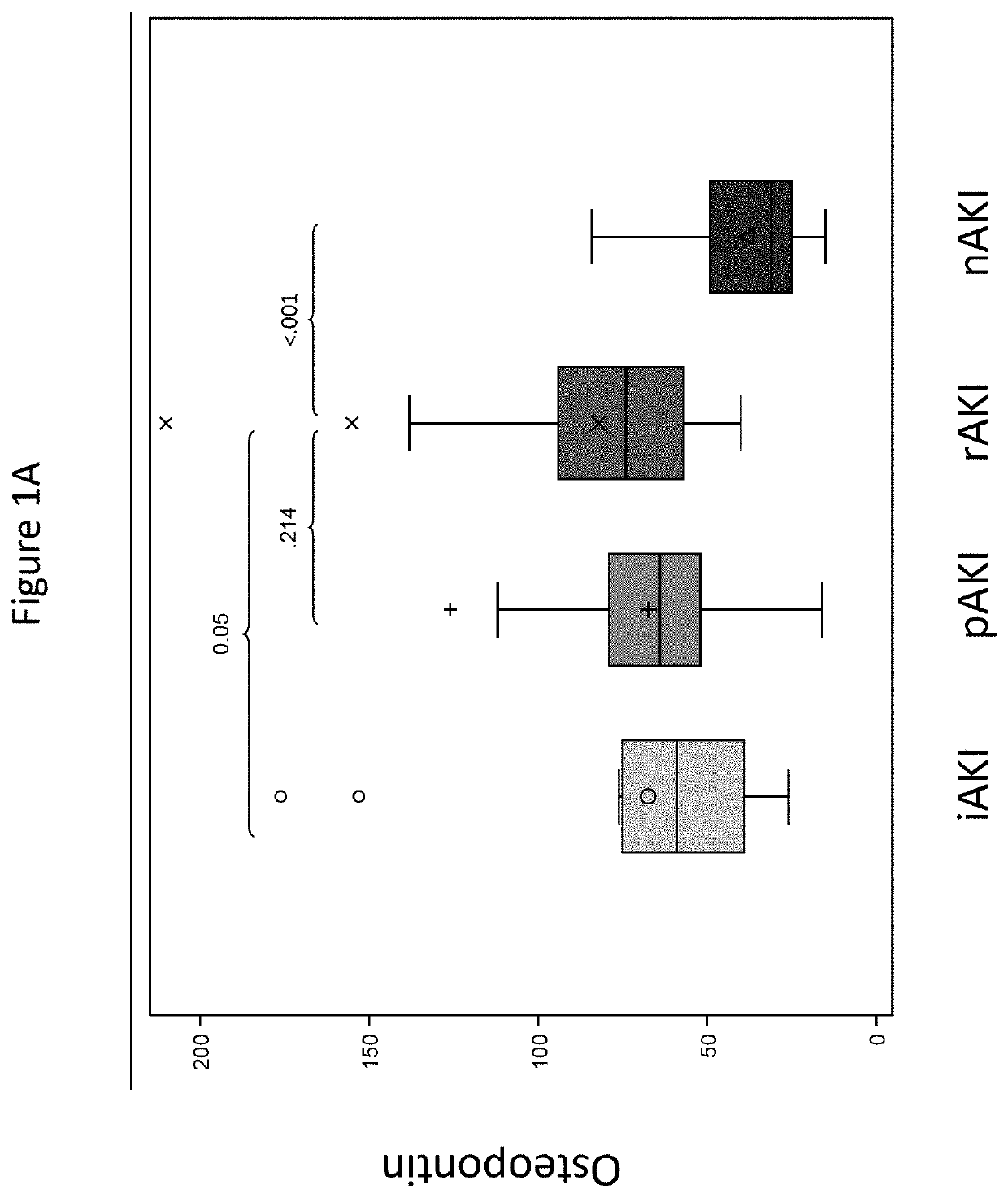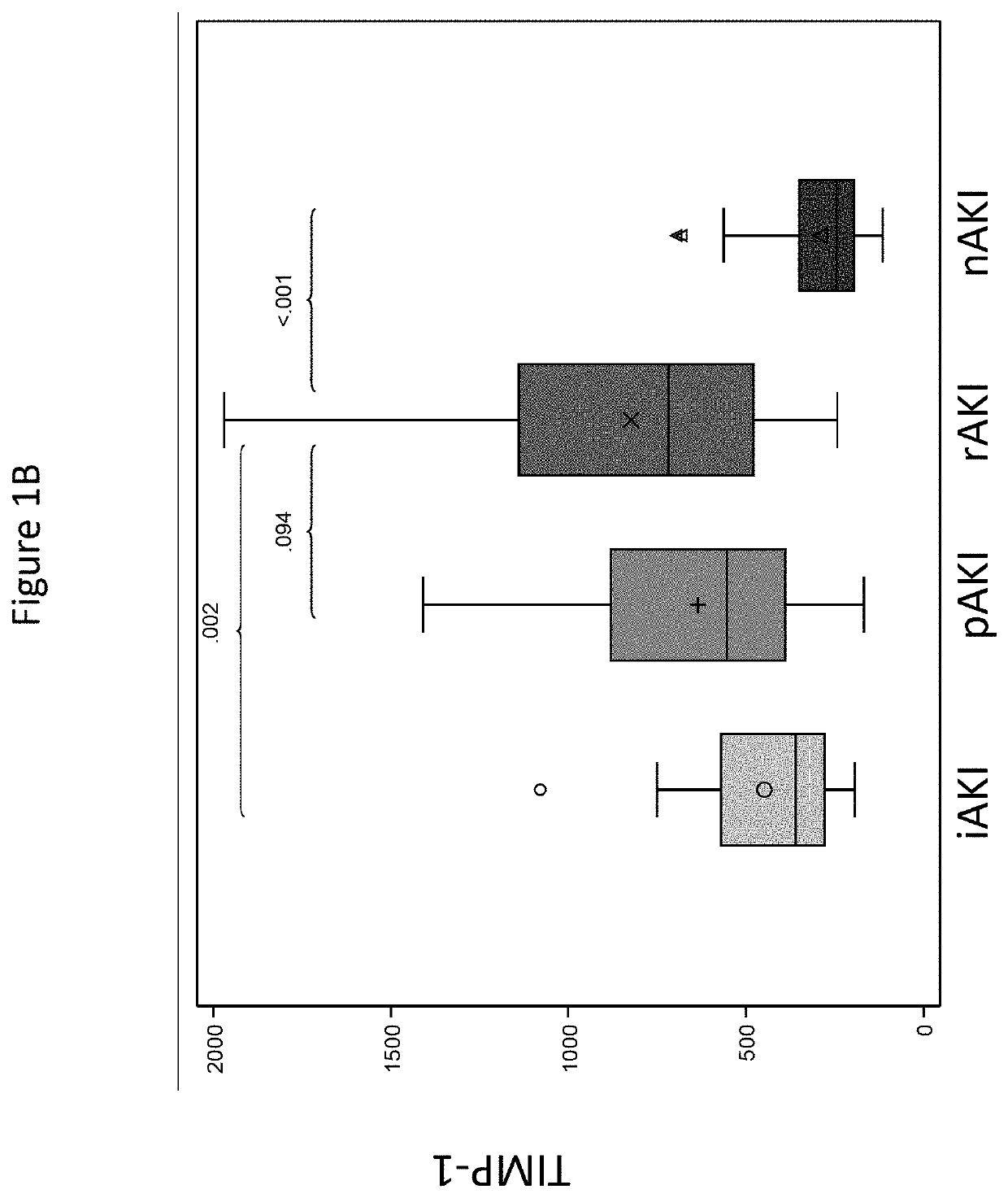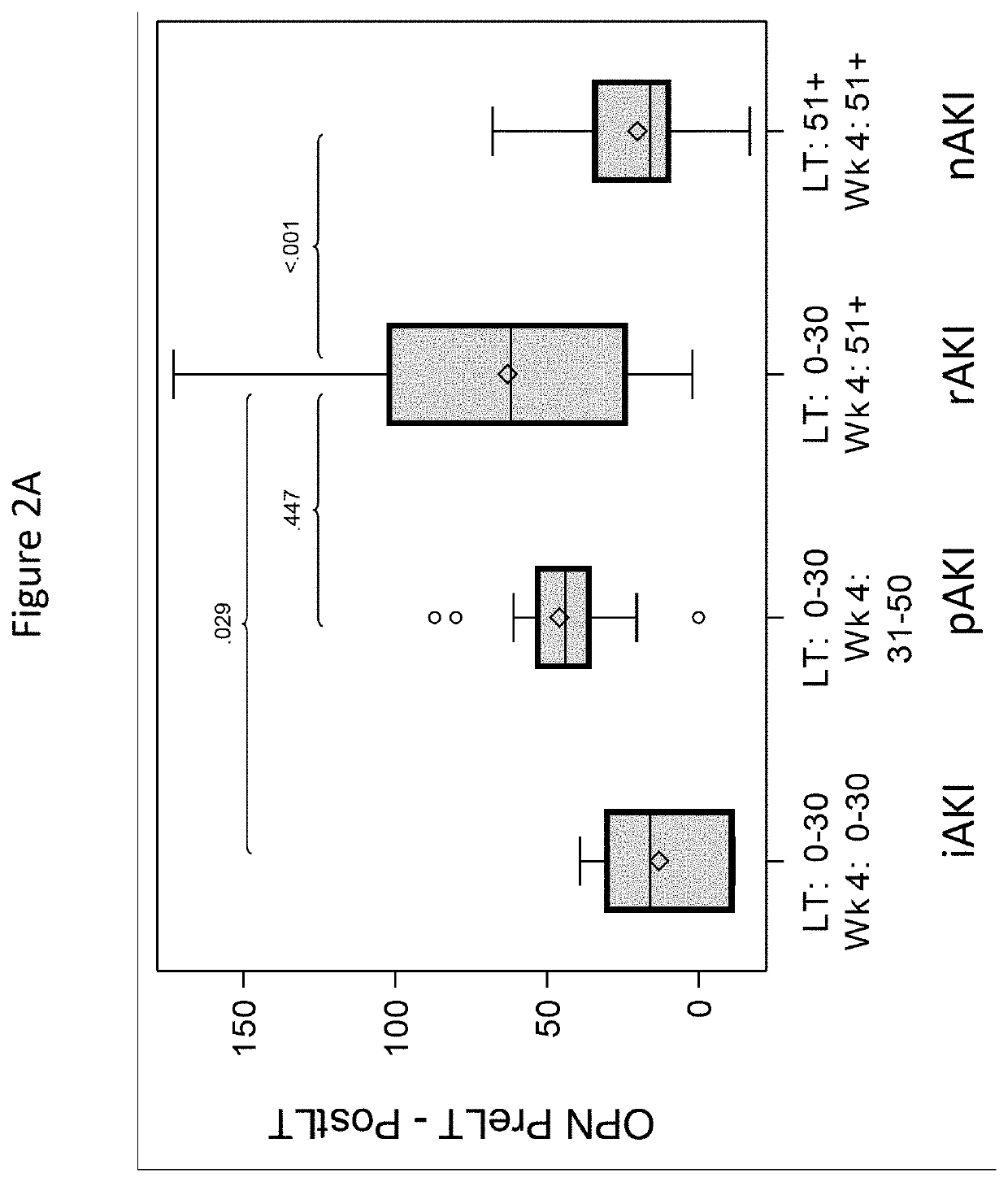Discovery and validation of an early post-transplant biomarker predictive of chronic kidney disease in liver transplant recipients
a liver transplant and biomarker technology, applied in the field of liver transplant recipients' early post-transplant biomarkers, can solve the problems of reducing the accuracy of discovery, affecting the prediction of lt recovery, and the implications of non-recovery of renal function following lt are too important for ‘best guess’ speculation, so as to reduce the progression rate of ckd and reduce the nephrotoxic
- Summary
- Abstract
- Description
- Claims
- Application Information
AI Technical Summary
Benefits of technology
Problems solved by technology
Method used
Image
Examples
example 1
[0059]Reference is made to the Abstract submitted to the The Liver Meeting of the American Association for the Study of Liver Disease (AASLD) 2018, entitled “Discovery and Validation of an Early Post-Transplant Biomarker Model Predictive of Chronic Kidney Disease in Liver Transplant Recipients,” Levitsky, et al.
[0060]Background: A significant proportion of patients develop chronic kidney disease after liver transplantation (LT). We have developed clinical / protein models to predict glomerular filtration rate (GFR) deterioration in recipients with normal GFR early after LT.
[0061]Methods: Using independent cohorts (CTOT-14: a seven center prospective NIAID study and BUMC: a single center Baylor cohort), we analyzed protocol serum / plasma samples from recipients with preserved GFR (>60 ml / min / 1.73 m2) at month 3 and had GFR deterioration vs. preservation at 1 year; year 5 GFR was also studied at BUMC. We also studied serial renal injury protein levels and GFR collected during the first y...
example 2
[0066]Reference is made to the manuscript, Levitsky, et al., “External Validation of a Pretransplant Biomarker Model (REVERSE) Predictive of Renal Recovery After Liver Transplantation,” Hepatology. 2019 October; (70(4):13459-1359, 2019 May 28, the content of which is incorporated herein by reference in its entirety.
[0067]Title: External Validation of a Pre-Transplant Biomarker Model (REVERSL) Predictive of Renal Recovery after Liver Transplantation
[0068]Abstract
PUM
| Property | Measurement | Unit |
|---|---|---|
| concentration | aaaaa | aaaaa |
| concentration | aaaaa | aaaaa |
| concentration | aaaaa | aaaaa |
Abstract
Description
Claims
Application Information
 Login to View More
Login to View More - R&D
- Intellectual Property
- Life Sciences
- Materials
- Tech Scout
- Unparalleled Data Quality
- Higher Quality Content
- 60% Fewer Hallucinations
Browse by: Latest US Patents, China's latest patents, Technical Efficacy Thesaurus, Application Domain, Technology Topic, Popular Technical Reports.
© 2025 PatSnap. All rights reserved.Legal|Privacy policy|Modern Slavery Act Transparency Statement|Sitemap|About US| Contact US: help@patsnap.com



